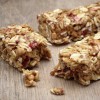 La fibra en los alimentos consiste de carbohidratos que no pueden ser digeridos. Aunque muchos alimentos naturalmente contienen fibra, hay ingredientes altos en fibra que comúnmente se añaden a los alimentos para aumentar el contenido de fibra. Los ingredientes con fibra se pueden adicionar por razones funcionales o de salud. This 3-page fact sheet is the Spanish language version of Shopping for Health: Foods with Added Fiber, written by Wendy J. Dahl, and published by the UF Department of Food Science and Human Nutrition, October 2014. (Photo: iStock/Thinkstock.com)
La fibra en los alimentos consiste de carbohidratos que no pueden ser digeridos. Aunque muchos alimentos naturalmente contienen fibra, hay ingredientes altos en fibra que comúnmente se añaden a los alimentos para aumentar el contenido de fibra. Los ingredientes con fibra se pueden adicionar por razones funcionales o de salud. This 3-page fact sheet is the Spanish language version of Shopping for Health: Foods with Added Fiber, written by Wendy J. Dahl, and published by the UF Department of Food Science and Human Nutrition, October 2014. (Photo: iStock/Thinkstock.com)
http://edis.ifas.ufl.edu/fs255
Tag: Food Science and Human Nutrition Department
Food Safety at Tailgating
 While tailgating can be a great fun for family and friends, you need to make plans and take on-site precautions to keep your food safe during these events. Since refrigerators and running water are not always available for the events, you should familiarize yourself with the safe food handling practices for these outdoor events and plan ahead so you will be prepared with enough coolers/ice and all the tools you need to keep and cook your food safely. This 3-page fact sheet provides information on safe food practices for tailgating and other outdoor sporting events. Written by Soohyoun Ahn, Amarat H. Simonne, and Keith R. Schneider, and published by the UF Department of Food Science and Human Nutrition, October 2014.
While tailgating can be a great fun for family and friends, you need to make plans and take on-site precautions to keep your food safe during these events. Since refrigerators and running water are not always available for the events, you should familiarize yourself with the safe food handling practices for these outdoor events and plan ahead so you will be prepared with enough coolers/ice and all the tools you need to keep and cook your food safely. This 3-page fact sheet provides information on safe food practices for tailgating and other outdoor sporting events. Written by Soohyoun Ahn, Amarat H. Simonne, and Keith R. Schneider, and published by the UF Department of Food Science and Human Nutrition, October 2014.
http://edis.ifas.ufl.edu/fs256
Datos sobre el fosforo
 El fósforo es un mineral que se encuentra en todas las células del cuerpo, por lo general en forma de fosfato. Es el segundo mineral más abundante en el cuerpo después del calcio. Alrededor del 85% del fósforo se almacena en los huesos y dientes. Es importante para la formación de huesos y dientes, además de la reparación de huesos.
El fósforo es un mineral que se encuentra en todas las células del cuerpo, por lo general en forma de fosfato. Es el segundo mineral más abundante en el cuerpo después del calcio. Alrededor del 85% del fósforo se almacena en los huesos y dientes. Es importante para la formación de huesos y dientes, además de la reparación de huesos.
This 3-page fact sheet was written by Nancy J. Gal y Wendy J. Dahl, and published by the UF Department of Food Science and Human Nutrition, August 2014.
http://edis.ifas.ufl.edu/fs252
Survival of Foodborne Pathogens on Berries
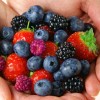 Fresh and frozen berries are popular foods. When berries are picked for fresh consumption, they are usually packed directly without washing because they are highly perishable. There is typically no “kill step” that would eliminate pathogens on fresh or frozen berries. Foodborne illness outbreaks have been associated with the consumption of fresh or frozen berries that were contaminated with pathogenic viruses, parasites, or bacteria. Contamination can occur before or during harvest or during final preparation. This 11-page fact sheet was written by Mary Palumbo, Linda J. Harris, and Michelle D. Danyluk, and published by the UF Department of Food Science and Human Nutrition, November 2014.
Fresh and frozen berries are popular foods. When berries are picked for fresh consumption, they are usually packed directly without washing because they are highly perishable. There is typically no “kill step” that would eliminate pathogens on fresh or frozen berries. Foodborne illness outbreaks have been associated with the consumption of fresh or frozen berries that were contaminated with pathogenic viruses, parasites, or bacteria. Contamination can occur before or during harvest or during final preparation. This 11-page fact sheet was written by Mary Palumbo, Linda J. Harris, and Michelle D. Danyluk, and published by the UF Department of Food Science and Human Nutrition, November 2014.
http://edis.ifas.ufl.edu/fs236
How to Start a Food Business: Introduction
 While running your own food business can be a rewarding and exciting experience, it can be overwhelming and stressful. It is important to understand the pros and cons of running your own food business and decide if you are ready to pursue a food business venture. This 3-page fact sheet was written by Soohyoun Ahn, Renee Goodrich-Schneider, and Amarat H. Simonne, and published by the UF Department of Food Science and Human Nutrition, September 2014.
While running your own food business can be a rewarding and exciting experience, it can be overwhelming and stressful. It is important to understand the pros and cons of running your own food business and decide if you are ready to pursue a food business venture. This 3-page fact sheet was written by Soohyoun Ahn, Renee Goodrich-Schneider, and Amarat H. Simonne, and published by the UF Department of Food Science and Human Nutrition, September 2014.
http://edis.ifas.ufl.edu/fs254
Clostridium difficile: an Important Opportunistic Pathogen in Healthcare-Associated Infections
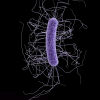 Opportunistic pathogens are significant health threats to vulnerable people with weakened immune systems, such as people with HIV/AIDS or those on immune-suppressing therapies. One opportunistic pathogen, Clostridium difficile, has been getting more attention in recent years because of its association with antibiotic use and high death rate in the elderly. This factsheet will provide an overview of Clostridium difficile infection (CDI) with a focus on healthcare-associated infections. This 5-page fact sheet was written by Soohyoun Ahn and Amarat H. Simonne, and published by the UF Department of Food Science and Human Nutrition, September 2014.
Opportunistic pathogens are significant health threats to vulnerable people with weakened immune systems, such as people with HIV/AIDS or those on immune-suppressing therapies. One opportunistic pathogen, Clostridium difficile, has been getting more attention in recent years because of its association with antibiotic use and high death rate in the elderly. This factsheet will provide an overview of Clostridium difficile infection (CDI) with a focus on healthcare-associated infections. This 5-page fact sheet was written by Soohyoun Ahn and Amarat H. Simonne, and published by the UF Department of Food Science and Human Nutrition, September 2014.
http://edis.ifas.ufl.edu/fs253
The Food Safety Modernization Act of 2011 – Proposed Rule for Preventive Controls for Human Food
 The Food Safety Modernization Act (FSMA), which was signed into law by President Obama on January 4, 2011, is the most sweeping reform of food safety laws in more than 70 years since the enactment of the Federal Food, Drug and Cosmetic Act of 1938. High-profile foodborne outbreaks in the last decade and their impact on public health and the economy have exposed the need for a new, modern food safety system. FSMA aims to ensure the safety and security of the US food supply by focusing on preventing food safety problems rather than responding after they occur. This law provides the FDA with new enforcement authorities to achieve a higher rate of compliance with food safety standards and to respond better to problems. This 5-page fact sheet was written by Soohyoun Ahn, Keith R. Schneider, Michelle D. Danyluk, and Renee Goodrich-Schneider, and published by the UF Department of Food Science and Human Nutrition, April 2014.
The Food Safety Modernization Act (FSMA), which was signed into law by President Obama on January 4, 2011, is the most sweeping reform of food safety laws in more than 70 years since the enactment of the Federal Food, Drug and Cosmetic Act of 1938. High-profile foodborne outbreaks in the last decade and their impact on public health and the economy have exposed the need for a new, modern food safety system. FSMA aims to ensure the safety and security of the US food supply by focusing on preventing food safety problems rather than responding after they occur. This law provides the FDA with new enforcement authorities to achieve a higher rate of compliance with food safety standards and to respond better to problems. This 5-page fact sheet was written by Soohyoun Ahn, Keith R. Schneider, Michelle D. Danyluk, and Renee Goodrich-Schneider, and published by the UF Department of Food Science and Human Nutrition, April 2014.
http://edis.ifas.ufl.edu/fs248
Datos sobre los antioxidantes
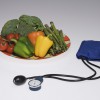 Nuestro cuerpo está constituido de células. Dentro de éstas ocurren constantemente reacciones químicas, que se conocen colectivamente como metabolismo. Estas reacciones son necesarias para la vida, pero algunas veces crean radicales libres. Los radicales libres son moléculas altamente reactivas que pueden iniciar reacciones dañinas en cadena en nuestras células. Esto se conoce como estrés oxidativo. Diversas investigaciones relacionan el estrés oxidativo con muchas enfermedades: artritis, enfermedades de los pulmones (como enfisema), enfermedades del corazón, enfermedad cerebro vascular, ulceras, hipertensión, Parkinson y Altzheimer, distrofia muscular y otras. El estrés oxidativo también contribuye al proceso normal de envejecimiento. This 3-page fact sheet is the Spanish language version of Facts about Antioxidants, written by Kaitlin G. Clark and Wendy J. Dahl, and published by the UF Department of Food Science and Human Nutrition, July 2014.
Nuestro cuerpo está constituido de células. Dentro de éstas ocurren constantemente reacciones químicas, que se conocen colectivamente como metabolismo. Estas reacciones son necesarias para la vida, pero algunas veces crean radicales libres. Los radicales libres son moléculas altamente reactivas que pueden iniciar reacciones dañinas en cadena en nuestras células. Esto se conoce como estrés oxidativo. Diversas investigaciones relacionan el estrés oxidativo con muchas enfermedades: artritis, enfermedades de los pulmones (como enfisema), enfermedades del corazón, enfermedad cerebro vascular, ulceras, hipertensión, Parkinson y Altzheimer, distrofia muscular y otras. El estrés oxidativo también contribuye al proceso normal de envejecimiento. This 3-page fact sheet is the Spanish language version of Facts about Antioxidants, written by Kaitlin G. Clark and Wendy J. Dahl, and published by the UF Department of Food Science and Human Nutrition, July 2014.
http://edis.ifas.ufl.edu/fs251
Datos sobre los Carbohidratos
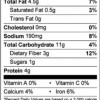 Los carbohidratos, grasas y proteínas son los tres nutrientes que proveen energía (calorías). Sin embargo, los carbohidratos como los almidones y azúcares son la fuente más importante y principal de energía. Durante la digestión, el almidón se rompe en azúcares (glucosa). Los carbohidratos en forma de glucosa proveen energía a las células, tejidos y órganos para llevar a cabo las actividades diarías. Alguna glucosa se almacena en el hígado y células de los músculos para usarla cuando se requiera. Los niños necesitan carbohidratos para el crecimiento y los adultos necesitan para mantener el peso. This 3-page fact sheet is the Spanish language version of Facts about Carbohydrate, written by Nancy J. Gal, Amanda L. Ford and Wendy J. Dahl, and published by the UF Department of Food Science and Human Nutrition, July 2014.
Los carbohidratos, grasas y proteínas son los tres nutrientes que proveen energía (calorías). Sin embargo, los carbohidratos como los almidones y azúcares son la fuente más importante y principal de energía. Durante la digestión, el almidón se rompe en azúcares (glucosa). Los carbohidratos en forma de glucosa proveen energía a las células, tejidos y órganos para llevar a cabo las actividades diarías. Alguna glucosa se almacena en el hígado y células de los músculos para usarla cuando se requiera. Los niños necesitan carbohidratos para el crecimiento y los adultos necesitan para mantener el peso. This 3-page fact sheet is the Spanish language version of Facts about Carbohydrate, written by Nancy J. Gal, Amanda L. Ford and Wendy J. Dahl, and published by the UF Department of Food Science and Human Nutrition, July 2014.
http://edis.ifas.ufl.edu/fs250
Datos sobre los flavonoides
 Los flavonoides son compuestos orgánicos que se encuentran naturalmente en plantas. Existen en la naturaleza más de 5 mil compuestos flavonoides, aquellos que se encuentran en las comidas caen en seis categorías: flavonoles, antocianinas, iso-flavonoides, flavan-3 oles, flavonas y flavanonas. Los compuestos en estas categorías son de interés por los beneficios potenciales sobre la salud. The English version of this document is Facts about Flavonoids. This 4-page fact sheet was written by Inbar Schapsis y Wendy J. Dahl, and published by the UF Department of Food Science and Human Nutrition, July 2014.
Los flavonoides son compuestos orgánicos que se encuentran naturalmente en plantas. Existen en la naturaleza más de 5 mil compuestos flavonoides, aquellos que se encuentran en las comidas caen en seis categorías: flavonoles, antocianinas, iso-flavonoides, flavan-3 oles, flavonas y flavanonas. Los compuestos en estas categorías son de interés por los beneficios potenciales sobre la salud. The English version of this document is Facts about Flavonoids. This 4-page fact sheet was written by Inbar Schapsis y Wendy J. Dahl, and published by the UF Department of Food Science and Human Nutrition, July 2014.
http://edis.ifas.ufl.edu/fs249
Dealing with Food Allergies
 A food allergy is an immune system reaction that happens after a person consumes what is normally considered a safe food. Food allergies occur more often in children than in adults: 4%–8% of those aged 4 or under and about 2% of adults are affected. Allergic reactions from food have led to over 20,000 emergency room visits per year. Annually, between 150 and 200 fatalities associated with food allergic reactions occur in the United States. This 4-page fact sheet was written by Keith R. Schneider, Renée Goodrich Schneider, Soohyoun Ahn, and Susie Richardson, and published by the UF Department of Food Science and Human Nutrition, January 2014.
A food allergy is an immune system reaction that happens after a person consumes what is normally considered a safe food. Food allergies occur more often in children than in adults: 4%–8% of those aged 4 or under and about 2% of adults are affected. Allergic reactions from food have led to over 20,000 emergency room visits per year. Annually, between 150 and 200 fatalities associated with food allergic reactions occur in the United States. This 4-page fact sheet was written by Keith R. Schneider, Renée Goodrich Schneider, Soohyoun Ahn, and Susie Richardson, and published by the UF Department of Food Science and Human Nutrition, January 2014.
http://edis.ifas.ufl.edu/fs123
Preventing Foodborne Illness Associated with Clostridium perfringens
 This is one in a series of fact sheets discussing common foodborne pathogens of interest to food handlers, processors, and retailers. This 5-page fact sheet was written by Keith R. Schneider, Renée Goodrich-Schneider, Michael A. Hubbard, and Susanna Richardson, and published by the UF Department of Food Science and Human Nutrition, January 2014.
This is one in a series of fact sheets discussing common foodborne pathogens of interest to food handlers, processors, and retailers. This 5-page fact sheet was written by Keith R. Schneider, Renée Goodrich-Schneider, Michael A. Hubbard, and Susanna Richardson, and published by the UF Department of Food Science and Human Nutrition, January 2014.
http://edis.ifas.ufl.edu/fs101
Preparacion de alimentos en pure
 Un alimento en puré es un alimento que ha sido licuado, mesclado o procesado hasta crear una textura uniforme y suave. Los ejemplos de alimentos con una consistencia en puré incluyen la salsa de manzana, relleno de tarta de calabaza y humus. Los alimentos en puré pueden ser necesarios para personas con problemas al tragar y/o masticar. Para aquellos que requieren una dieta basada de purés, es muy importante proveer una variedad de alimentos. Casi todas las comidas se pueden preparar como puré. Sin embargo, algunas comidas pueden ser más aceptadas que otras. This 4-page fact sheet was written by Wendy J. Dahl y Jamila R. Lepore, and published by the UF Department of Food Science and Human Nutrition, February 2014.
Un alimento en puré es un alimento que ha sido licuado, mesclado o procesado hasta crear una textura uniforme y suave. Los ejemplos de alimentos con una consistencia en puré incluyen la salsa de manzana, relleno de tarta de calabaza y humus. Los alimentos en puré pueden ser necesarios para personas con problemas al tragar y/o masticar. Para aquellos que requieren una dieta basada de purés, es muy importante proveer una variedad de alimentos. Casi todas las comidas se pueden preparar como puré. Sin embargo, algunas comidas pueden ser más aceptadas que otras. This 4-page fact sheet was written by Wendy J. Dahl y Jamila R. Lepore, and published by the UF Department of Food Science and Human Nutrition, February 2014.
http://edis.ifas.ufl.edu/fs246
Alimentos en pure: Los pures altos en proteina
 La proteína es un nutriente esencial que nuestro cuerpo necesita para funcionar correctamente y de manera eficiente. Cada célula, tejido y órgano del cuerpo necesita una fuente constante de proteínas para mantener una buena salud y un buen funcionamiento. Para que estos procesos metabólicos ocurran, las proteínas se descomponen para que el cuerpo las pueda usar y se reemplazan por los alimentos que comemos. This 5-page fact sheet was written by Jamila R. Lepore y Wendy J. Dahl, and published by the UF Department of Food Science and Human Nutrition, February 2014.
La proteína es un nutriente esencial que nuestro cuerpo necesita para funcionar correctamente y de manera eficiente. Cada célula, tejido y órgano del cuerpo necesita una fuente constante de proteínas para mantener una buena salud y un buen funcionamiento. Para que estos procesos metabólicos ocurran, las proteínas se descomponen para que el cuerpo las pueda usar y se reemplazan por los alimentos que comemos. This 5-page fact sheet was written by Jamila R. Lepore y Wendy J. Dahl, and published by the UF Department of Food Science and Human Nutrition, February 2014.
http://edis.ifas.ufl.edu/fs245
Facts about Antioxidants
 Our bodies are made up of cells. Chemical reactions necessary for life are constantly occurring inside our cells, and sometimes they create free radicals — highly reactive molecules that can initiate damaging chain reactions known as oxidative stress.
Our bodies are made up of cells. Chemical reactions necessary for life are constantly occurring inside our cells, and sometimes they create free radicals — highly reactive molecules that can initiate damaging chain reactions known as oxidative stress.
Antioxidants can inactivate free radicals and protect our cells from oxidative stress and the damage it causes. Antioxidants also can help our immune system defend against bacteria, fungi, viruses, and some cancers. The body produces some of its own antioxidants, but eating a plant-based diet increases the level of antioxidants in our bodies. This 3-page fact sheet was written by Kaitlin G. Clark and Wendy J. Dahl, and published by the UF Department of Food Science and Human Nutrition, February 2014.
http://edis.ifas.ufl.edu/fs242
Facts about Carbohydrate
 Carbohydrate, fat, and protein are the three nutrients that provide energy (calories). However, carbohydrate from starch and sugars is our main and most important source of energy. During digestion, starch is broken down to sugar (glucose). Carbohydrate in the form of glucose provides energy to cells, tissues, and organs to carry out daily activities. Some glucose is stored in the liver and muscle cells for later use when required. Children need carbohydrate for growth, and adults need carbohydrate to maintain their weight. This 3-page fact sheet was written by Nancy J. Gal, Amanda L. Ford, and Wendy J. Dahl, and published by the UF Department of Food Science and Human Nutrition, February 2014.
Carbohydrate, fat, and protein are the three nutrients that provide energy (calories). However, carbohydrate from starch and sugars is our main and most important source of energy. During digestion, starch is broken down to sugar (glucose). Carbohydrate in the form of glucose provides energy to cells, tissues, and organs to carry out daily activities. Some glucose is stored in the liver and muscle cells for later use when required. Children need carbohydrate for growth, and adults need carbohydrate to maintain their weight. This 3-page fact sheet was written by Nancy J. Gal, Amanda L. Ford, and Wendy J. Dahl, and published by the UF Department of Food Science and Human Nutrition, February 2014.
http://edis.ifas.ufl.edu/fs243
Facts about Flavonoids
 Flavonoids are organic compounds that occur naturally in plants. More than five thousand flavonoid compounds exist in nature, but those found in foods fall into six major categories: flavonols, anthocyanidins, isoflavones, flavan-3-ols, flavones, and flavonones. The compounds in these categories are of interest because of their potential health benefits. This 4-page fact sheet was written by Inbar Schapsis and Wendy J. Dahl, and published by the UF Department of Food Science and Human Nutrition, February 2014.
Flavonoids are organic compounds that occur naturally in plants. More than five thousand flavonoid compounds exist in nature, but those found in foods fall into six major categories: flavonols, anthocyanidins, isoflavones, flavan-3-ols, flavones, and flavonones. The compounds in these categories are of interest because of their potential health benefits. This 4-page fact sheet was written by Inbar Schapsis and Wendy J. Dahl, and published by the UF Department of Food Science and Human Nutrition, February 2014.
http://edis.ifas.ufl.edu/fs244
Los alimentos hechos en pure, las bebidas espesadas y las necesidades de agua
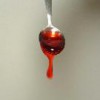 El consumo adecuado del agua puede ser un problema para algunas personas con problemas de tragar, especialmente para aquellos que tienen dificultad para tragar los líquidos ligeros. Los ejemplos de líquidos ligeros son el agua, la leche, el café, el té, y la mayoría de los jugos de frutas. This 4-page fact sheet was written by Wendy J. Dahl, and published by the UF Department of Food Science and Human Nutrition, January 2014.
El consumo adecuado del agua puede ser un problema para algunas personas con problemas de tragar, especialmente para aquellos que tienen dificultad para tragar los líquidos ligeros. Los ejemplos de líquidos ligeros son el agua, la leche, el café, el té, y la mayoría de los jugos de frutas. This 4-page fact sheet was written by Wendy J. Dahl, and published by the UF Department of Food Science and Human Nutrition, January 2014.
http://edis.ifas.ufl.edu/fs241
Frijoles, guisantes, y lentejas: Beneficios de la Salud
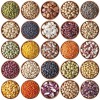 Los frijoles, los guisantes y las lentejas son conocidos colectivamente como legumbres. Los frijoles son una gran fuente de muchos nutrientes, incluyendo proteína, fibra y potasio. This 2-page fact sheet was written by Lakshmi Mahan, Lauren Foster, and Wendy J. Dahl, and published by the UF Department of Food Science and Human Nutrition, January 2014.
Los frijoles, los guisantes y las lentejas son conocidos colectivamente como legumbres. Los frijoles son una gran fuente de muchos nutrientes, incluyendo proteína, fibra y potasio. This 2-page fact sheet was written by Lakshmi Mahan, Lauren Foster, and Wendy J. Dahl, and published by the UF Department of Food Science and Human Nutrition, January 2014.
http://edis.ifas.ufl.edu/fs240
Los alimentos en pure y la fibra
 La fibra es importante para la buena salud. El consumo inadecuado de fibra puede conducir al estreñimiento y a otros problemas gastrointestinales. Las dietas altas en fibra pueden ayudar a reducir el colesterol y la glucosa en la sangre, lo que reduce el riesgo de las enfermedades del corazón. Aunque la fibra se encuentra en todos los alimentos de origen vegetal como las frutas, los vegetales, los granos, las nueces y las semillas, la mayoría de las personas no consumen lo suficiente.The English version of this document is FSHN12-16/FS209 Puréed Foods and Fiber. This 4-page fact sheet was written by Wendy J. Dahl, and published by the UF Department of Food Science and Human Nutrition, December 2013.
La fibra es importante para la buena salud. El consumo inadecuado de fibra puede conducir al estreñimiento y a otros problemas gastrointestinales. Las dietas altas en fibra pueden ayudar a reducir el colesterol y la glucosa en la sangre, lo que reduce el riesgo de las enfermedades del corazón. Aunque la fibra se encuentra en todos los alimentos de origen vegetal como las frutas, los vegetales, los granos, las nueces y las semillas, la mayoría de las personas no consumen lo suficiente.The English version of this document is FSHN12-16/FS209 Puréed Foods and Fiber. This 4-page fact sheet was written by Wendy J. Dahl, and published by the UF Department of Food Science and Human Nutrition, December 2013.
http://edis.ifas.ufl.edu/fs238